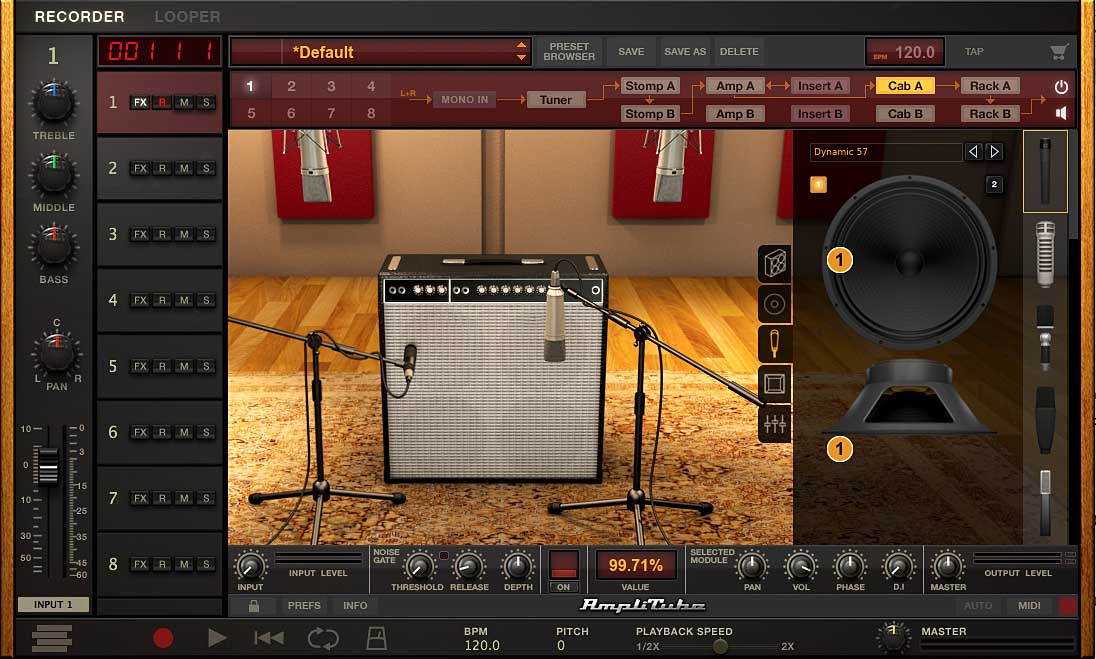Spiritbox guitarist Mike Stringer’s 13 tips for using guitar plugins
The Canadian metal band's stellar debut was recorded exclusively with Neural DSP plugins, and here Stringer takes a deep dive into how he uses them and what they can do for you
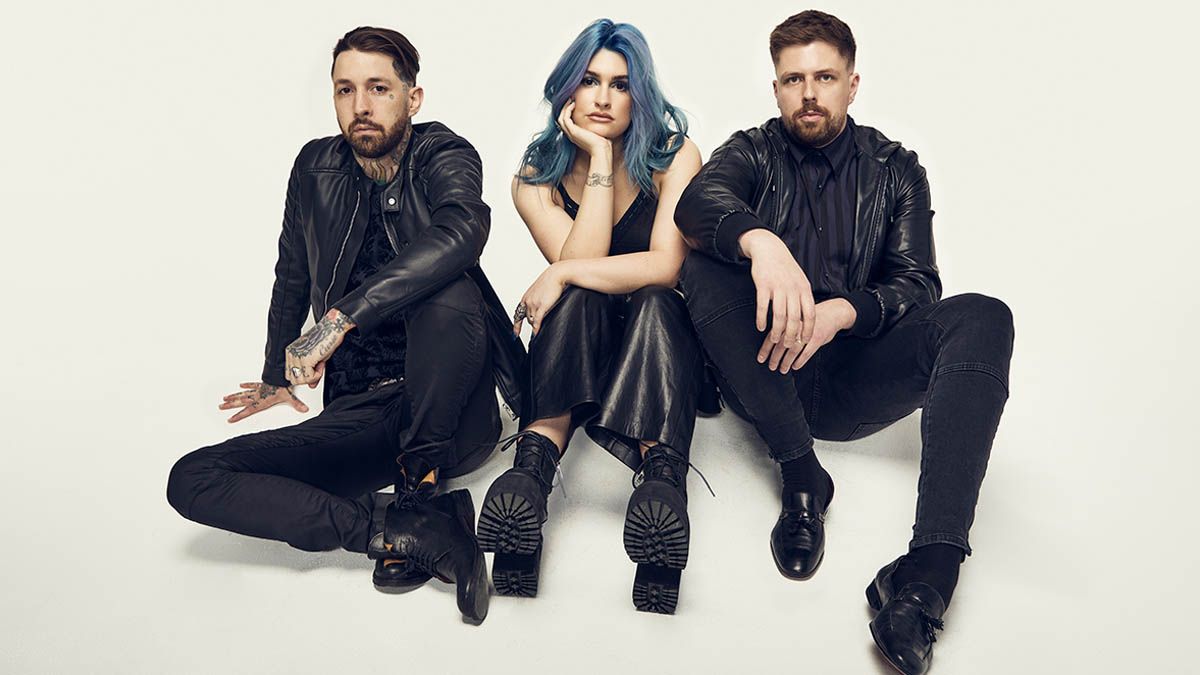
Beginning as an online project between former Iwrestledabearonce vocalist Courtney LaPlante and guitarist Mike Stringer (who also happen to be married), Spiritbox might be new on your radar, but their seemingly rapid rise to success has actually been six years in the making.
Debut album Eternal Blue mixes up influences from metalcore, nu-metal and hardcore, but also takes in polar-opposite sounds, reaching into soundscapes, EDM and even pop to create one of the freshest, most anticipated collection of songs heavy music has seen in a long time.
What’s more, the extreme drop-tuned guitar tones on Eternal Blue were recorded with multi-scale 7-string guitars and captured entirely with plugins (specifically Neural DSP’s Nolly and Plini models). In a nutshell, Spiritbox is a none-more-2021 snapshot of what’s possible using your creativity, guitar and a computer.
We sat down with Mike Stringer to get the lowdown (drop-F#, to be precise) on the band and his tips for using plugins with your guitar.
How did Spiritbox get started?
“Courtney and I were in an old band together called Iwrestledabearonce which ended in the winter of 2015. As soon as we got home we started writing for the first EP and it took us close to a year to get that solidified and ready to go.
“It didn’t come out until October 2017, and when that came out we just started making more music and creating videos and everything. We picked up Bill [Crook], our bass player in early 2018, and from there it’s just been pumping out material and making as much music as possible, putting it online to try to create a demand.
Want all the hottest music and gear news, reviews, deals, features and more, direct to your inbox? Sign up here.
“But then the moment we were able to do it live it was March 2020, and we went out to go do it and everything went to shit! It’s crazy how time has flown by and now we’re here which is pretty wild.“
Creating music is supposed to be fun and it’s supposed to not have rules
Do you think the enforced downtime of the pandemic and having to find other ways to promote yourself helped in a weird way?
“Yeah, for sure. The band definitely had a very unconventional approach to building an audience first before going out and doing it live, so we spent a long time just putting music out and trying to connect to people that way.
“So when Covid happened, we just immediately flipped back to doing what we were already doing, but for other bands they were like ‘What the fuck do we do?’, you know? For us it was like going back to our old ways. In the last 12 months especially, things have changed for us quite a bit, and it’s just been this very odd time where all these awful things are happening in the world.
“You read these headlines and see all these people suffering, and for our band to be going in the opposite direction is just odd. It’s a weird feeling. But at the end of the day I feel like in these times people need music, they’re on their phones and on their computers, and maybe that’s how we were able to be discovered easily, because we already had the videos out there and the music available on all those services and stuff. It’s definitely been a whirlwind to say the least.”
Your music isn’t just one sound or sub-genre of heavy music either, there are a lot of influences in there…
“It’s hard to get specific with describing our sound because the whole goal of the band is to be genre less in a way. We don’t sit down and say ‘We have to write this type of song’. Whatever riffs or sounds come out, that just is what it is, because if we enjoy what we’re hearing on the playback monitors then we just go with it.
James Hetfield has the most insane right hand on the planet
“I feel like that’s kind of the beauty of it because we’ve spent most of our careers in other bands feeling so worried and being trapped in that thinking ‘We can’t use synths, we can’t use 808s’ or any of that stuff. But what’s the joy in that?
“Creating music is supposed to be fun and it’s supposed to not have rules, so I think if you were to classify it, you’d call it metalcore. I just tell people I’m in a metal band because in a nutshell it’s kind of what it is. But yeah, I think the goal of the band is to have variety.”
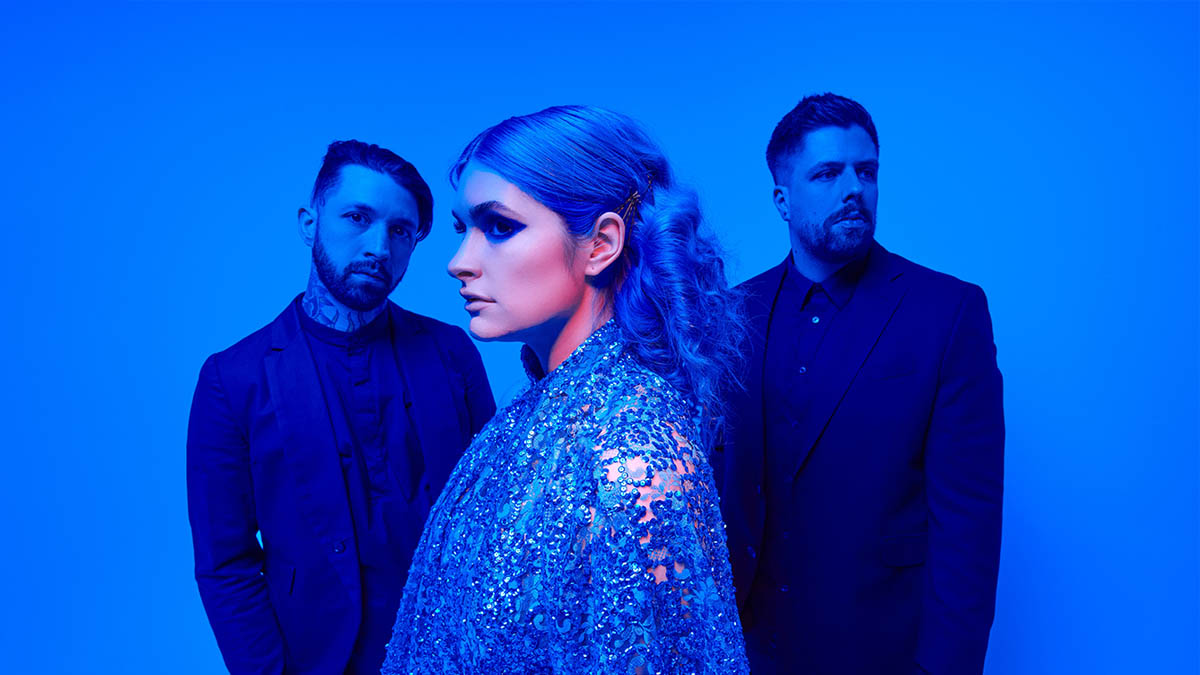
How about you as a guitar player, who are your influences?
“I used to only look at one thing, especially when I was younger. Every other band I’ve ever been in has been about ‘How many notes can you play? How ugly and dissonant can you make this’. In the older days I was obsessed with Tony Danza Tapdance Extravaganza; Josh Smith was a huge one for me. I used to love the guys from Protest The Hero, and I still love all those guys, don’t get me wrong.
“But as I’ve gotten older I’ve gone back to the roots which I used to start listening to metal music. James Hetfield has the most insane right hand on the planet. Guys like Mick Thomson and Jim Root write incredible riffs. Munky and Head from Korn were at the forefront of downtuning, and it being the biggest style of music in the world and so widely accepted.
It’s a bigger challenge to me to make something simple and memorable than something fast or dissonant or whatever for the sake of shock value
“I love looking at that and thinking ‘Why did it work so well?’. Why is it now that the average person would listen to something that low-tuned and heavy and frown on it, but back in the year 2000 it was on the radio, you’d walk into the supermarket and Korn would be playing! It’s interesting to me.
“I don’t mean to sound like that guy but I think I’ve just gotten to the point where I’m more focused on the big picture as opposed to in the moment of that riff of ‘How could I impress someone?’ I’m thinking more about how I can support our vocalist so that she can shine and make the part better. It’s a bigger challenge to me to make something simple and memorable than something fast or dissonant or whatever for the sake of shock value.”
What guitars did you use on the album?
“The three guitars that I used on the album were my Artistides 070SR, it’s one of their Raw models and it’s a multi-scale. Then I have a Balaguer Growler with an EverTune, and we doubled everything with that. So that way, anything that needed to be super-locked-in, like choruses and lead stuff where you need it to be perfectly intoned, we’d have takes with the EverTune guitar. Then anything that could ride that line a little bit, we had the non-EverTune.
“Then 99 per cent of the clean stuff was a Schecter seven-string Elite multi-scale guitar we had in the studio. It had Fishman Moderns in there, but it was a split-coil, and then there’s the active/passive setting too. It’s also just a really sick guitar. It plays amazingly.“
When we got the tour offer for Limp Bizkit I was just ecstatic. When I was younger I think I melted Chocolate Starfish… so getting that tour was huge. It was such an honour. Then three shows in it all got cancelled.
You recently had your tour with Limp Bizkit cancelled, that must have been a huge moment but also disappointing at the same time
“Man, what a bummer! When we got the tour offer for Limp Bizkit I was just ecstatic. When I was younger I think I melted Chocolate Starfish… so getting that tour was huge. It was such an honour. Then three shows in it all got cancelled.
“We were on stage sound checking an hour before doors and a stagehand for the venue came up to us and said ‘Hey, I’m really sorry to introduce myself like this, but the show’s cancelled and you’ve gotta pack up.’ So we were standing there and it was like last March all over again, being told you’ve got to go home.
“But the silver lining is that we were all healthy and safe. It definitely could have been a much worse situation. I’m just happy that we’re all vaccinated. It’s just going to be a bumpy six to 12 months, I think. All you can do is make sure you’re safe and healthy and wearing masks and stuff, otherwise we’re not going to get through this anytime soon!“
Did you get a chance to hang out with Wes?
“Yeah, his rig is crazy. I don’t know the absolute specifics because the day I was getting into asking questions with his tech, that’s when we got cut. I don’t want to be there on day one going ‘Can you tell me about your rig and how it all works?!’. But what his tech told me is that one half of his pedalboard is for all the clean stuff and the other half is for all the heavy stuff.
“He has a split between a Roland JC120 for cleans and then he’s got two EVH heads. It sounded massive. That was cool to get to see because when you look at the pedalboard at first it looks so overwhelming. But once you think of it as two separate boards it makes more sense.“
What were your first experiences with guitar plugins?
“I had one of those Line 6 Guitar ports, the little red box that was kind of slim with one knob on it and a demo copy of the software with 10 amps on it. I think that was about 2008/2009. I got it then, even though it wasn’t the most seamless thing, I understood the power of it and it’s taken a long time for plugins to get to where they are now, where we’re using them on actual album releases and stuff.
The moment that the Neural DSP plugins came out, that’s kind of when everything changed for me. That was the first time a plugin had that weight and response
“But even then I was like ‘This is so insane, you can get this clean of a signal through your computer, print it and then you’re good to go.’ I feel like over the years diving into that has been such a blessing because over the years just diving into that has enabled us to make records in my parents’ basement!
“Then I got a Pod, which had the same kind of interface for the plugin side of things. Then I recorded a couple of albums with a Fractal [Axe FX], but the moment that the Neural DSP plugins came out, that’s kind of when everything changed for me. That was the first time a plugin had that weight and response and felt as close to an amp as I’d ever felt.
“That’s 90 per cent of it for me, how it feels as opposed to how good the sound is coming out. I know with my right hand when I hit a palm-mute or something, what I’m feeling back is very important. The Neural definitely supplies that and reacts like a real amp.“
“Back in 2019 we went and recorded two singles, Blessed Be and Rule of Nines with Dan Braunstein. I was adamant that I wanted to use a real amp, so we mic’d stuff up, it was sounding good. Dan recorded the band Volumes and they have a record called Via which changed my life completely.
“He’s just got that ear and was doing all the plugin stuff well before a lot of people. He championed Guitar Rig and made it work, and no dig on Guitar Rig but that is not an easy feat because it’s a hard programme to use to me.
“So anyway, he wanted to try a plugin so he could compare the real amp and the plugin. He came across the Neural Nolly 5150. I don’t know if it’s directly a 5150, but the UI of it definitely is. We tried that and put it up against the real thing and he was like ‘Dude, the plugin smokes it. Plus the fact that I can switch out the cab sim, and I can tweak it after. This is a no-brainer.’
“We’ve been using that Neural Nolly plugin on our stuff exclusively ever since, and I think it’s the stock setting that it comes in, straight up. I set it flat at 12 o’clock with minimal tweaks and a boost in front, and I think it’s the stock cab sim too.
“I can’t say that it’s totally just that because I’m sure he adds some EQ and flavouring on top, but the heart of it, that’s what it is. But the nice thing about it too is that you’re able to split up the plugin, so on some clean stuff we used the Plini plugin with our split coil, then all the distorted tones are all the Nolly plugin.”
Mike's plugin tips... 1. Get a great guitar audio interface
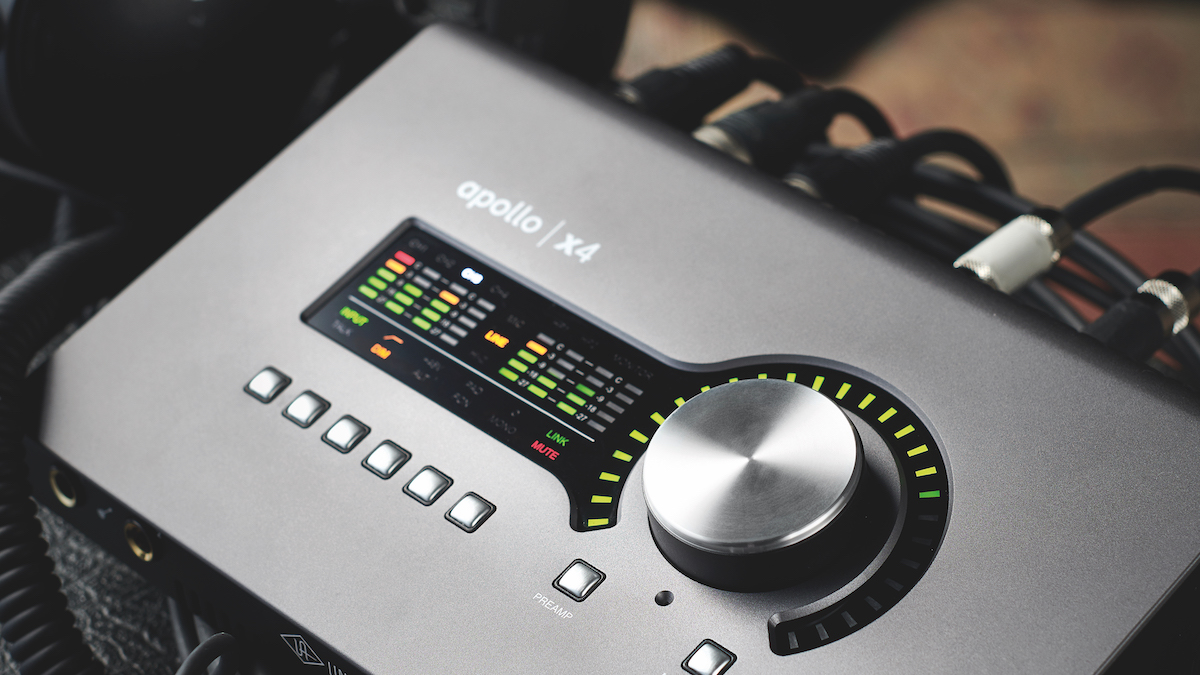
“One thing that helped me a lot, and I highly recommend it, is if you can get a Universal Audio Apollo – you can find them used too - those are honestly super-clean going in. You don’t even need a DI box, you can just go straight into the interface and that plays a huge role in my opinion for not only latency, but how clean the signal is.
“There are some interfaces that are entry level that’ll get you by, but if you A/B it, there’s a huge difference in my opinion. Even the small things like being able to use the DSP plugins on the way in, we used their 1176 compressor on the way in and that made a huge difference.“
2. Know your DAW
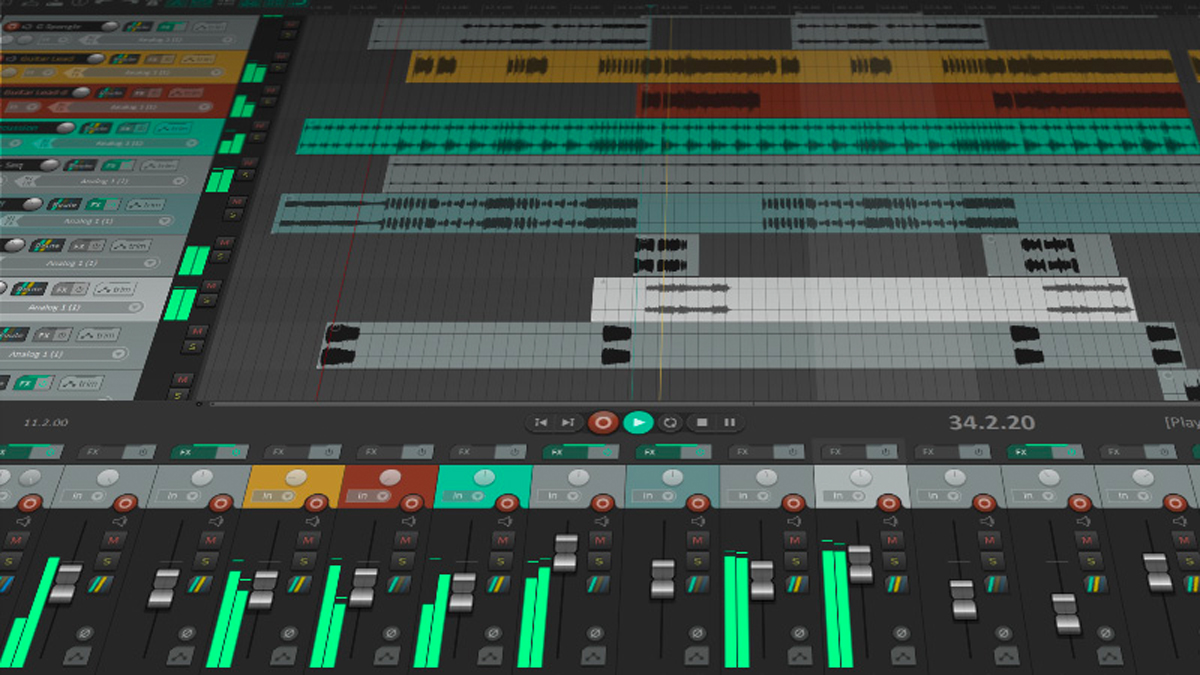
“Learning your DAW is huge. I use Reaper and when I tell people they’re like ‘Why would you use that?’ But it’s the only thing I’ve used since I was 16. I don’t know it inside and out, but if I get to a point where for whatever reason my DI is being heard at the same time as my amp sim or whatever, or I have an issue, it’s just super easy to figure it out because it’s what I’m comfortable with.
“So I’d say just pick one. It doesn’t matter [which] at the end of the day, but if it’s Pro Tools, stick with Pro Tools, if it’s Reaper stick with Reaper. Your sound isn’t going to be affected, it’s just being able to learn it inside and out so that when you do run into issues you can troubleshoot really easily. I’d also recommend picking one that lots of people use, so that if you do get stuck you can just go on YouTube and have someone walk you through how to fix it!
“But for me learning Reaper was important in my recording career, which usually is just minimal stuff like sometimes recording Courtney’s vocals, or recording my DIs and sending them out. But not knowing that stuff is daunting.“
3. Monitoring is key
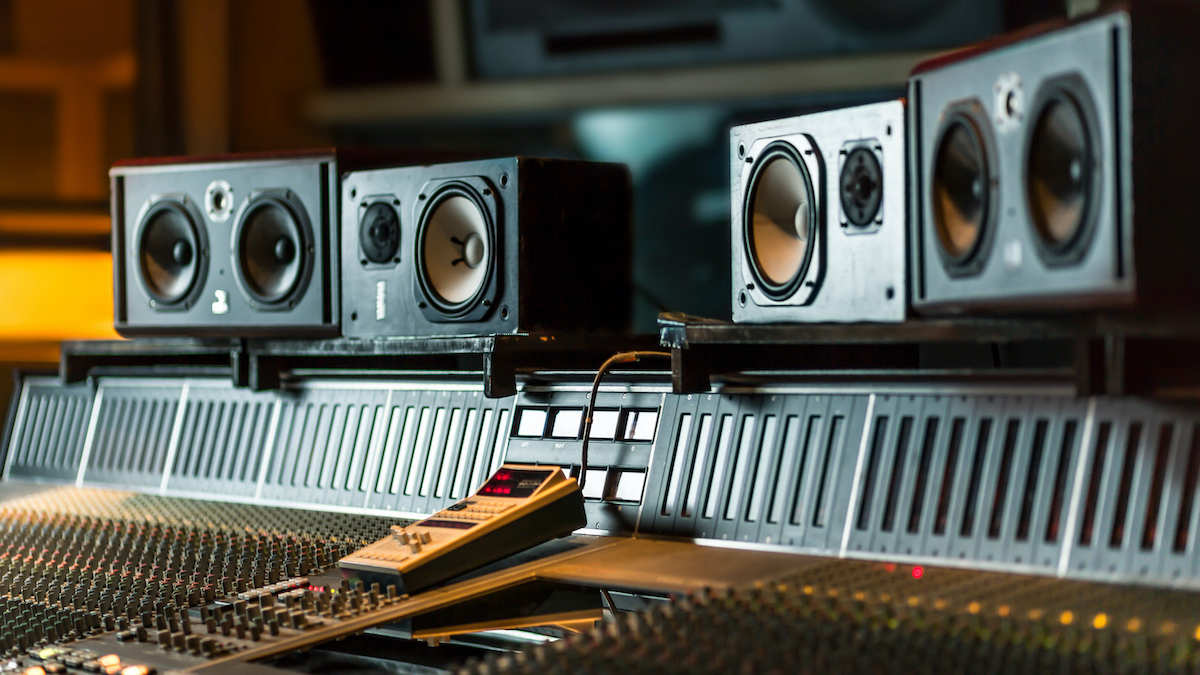
“Most of the time I’m using a set of Adam studio monitors that I’ve had for a long time and I know, to a certain degree. Some people want to monitor really low, I’m the type of dude that wants it really loud, like a real amp so I can hear how it’s coming through.
“But I think it comes down to personal preference. I’ve recorded in headphones before; I don’t personally recommend it. Whenever I’m recording or doing tone-chasing, I open up the volume quite a bit and I’ll just sit there and play the same thing and A/B it over and over again. Whether it’s different cab sims or different amp heads that I’m trying out with the plugin, I feel like monitors are a huge benefit in that situation.”
4. Set your feel as well as the sound
“I definitely get it to a point where, by itself, it feels good to play. Because I feel like when you’re tracking, it’s important for your stuff to sound good, and you can trick yourself into thinking you’re doing better than you are. Like, if you were to take a sound and be like ‘Whatever, I’ll figure it out later’, you’re not going to be digging in as hard.
“Your playing is going to be reactive to what you’re hearing coming back, so whatever you’re playing through it has to be pleasant to your ears, and get you excited about what you’re doing. The beautiful thing about plugins is that you can get the guitar sound to a point where it’s 75 to 80 per cent there by itself.
“But what I’ve come to learn is that a lot of stuff has to be done once everything else is finished. Because the moment you put that in a full band scenario, it’s going to get lost under everything else. So my thing is that you can take your performance and play to it, it’s all good, then at the end of the day you can tweak for the mix. Whereas with a real amp, you’re committing to that sound, and then you’re stuck. So it’s nice to be able to take what you’ve done and then at the end be able to tweak things if needed.“
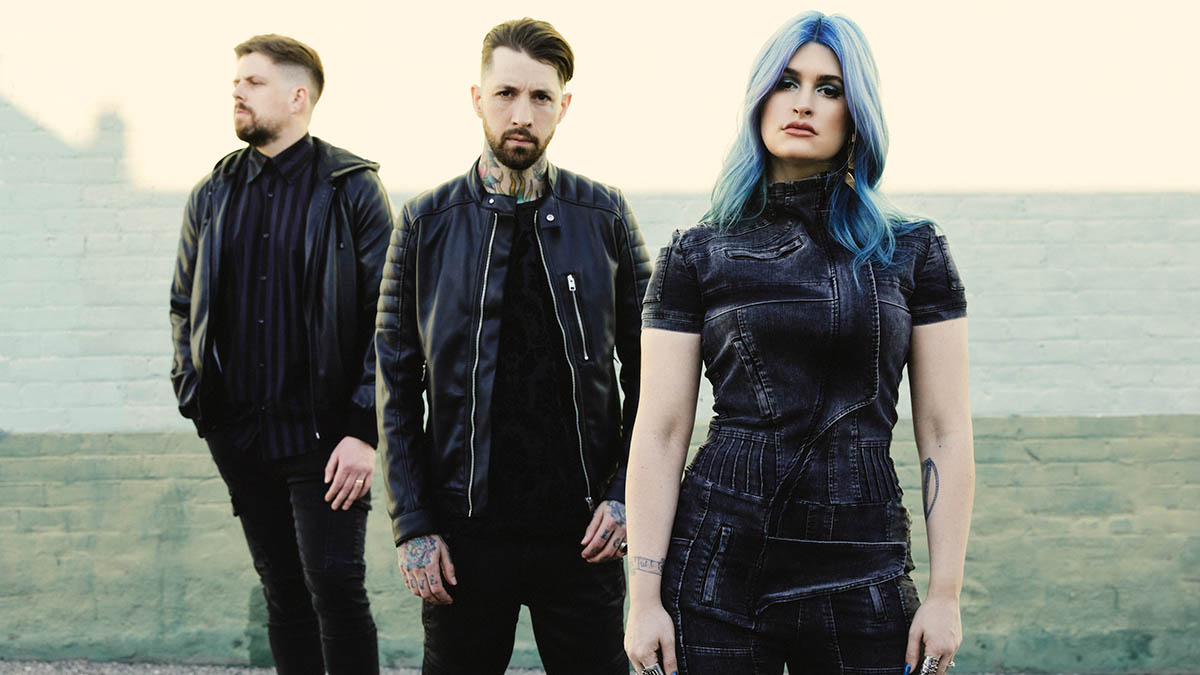
5. Minimal gain equals maximum gains when stacking
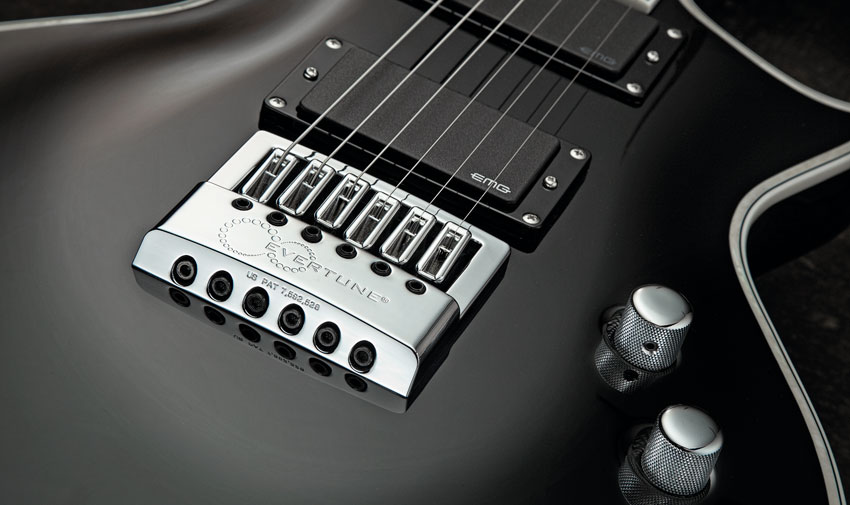
“We literally do one quick run through a part, and then we’ll take the other side. So we won’t do the full song on one side then the other side all the way through. If we’re doing a chorus, we’ll record the chorus part and then double it for the other side.
“It makes it more consistent for tuning because we’re in Drop F# on a seven-string, so we’re really low, and I’m fortunate enough to have a couple of guitars with an EverTune bridge on them so it makes recording those parts really easy. But before I had those we’d record one take and it’d be in tune, then if you don’t do the double-take really quickly, you’re going to spend 20 minutes tuning to match the first part!
“We barely use any gain, like at all. I’ll go into it with a lot, then as we’re finishing recording Dan’s taking that gain knob and turning it lower and lower and he’s like ‘It’s so much clearer dude!’ And he’s right. To be able to do that [after the track is recorded] is massive.”
6. Replicate, don’t duplicate
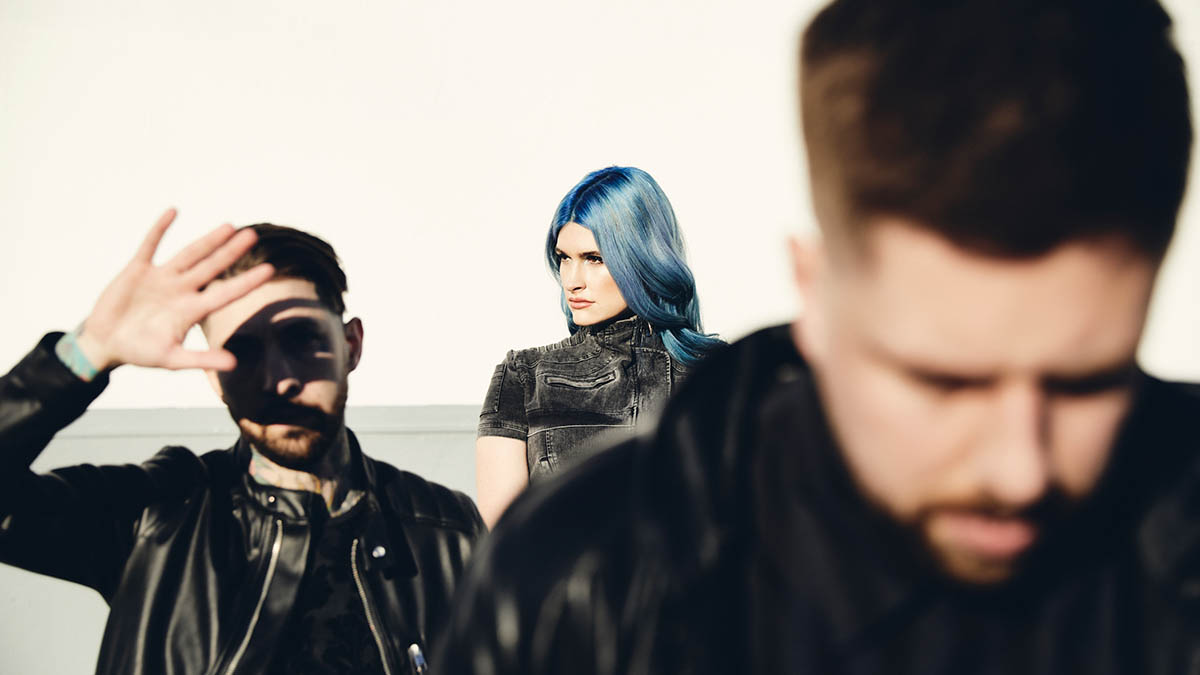
“Don’t do that! Here’s the thing, for me I definitely like to get through whole parts. I don’t like to do, ‘Punch-in, copy/paste, quantize’. It loses that natural playing feel and I think that’s where metal has gone wrong in the last little while.
“Everybody is so hyper-focused on perfection, but I like hearing the natural sound of what your hands are doing, because you’re human! Right off the top of my head, there’s a part in a song of ours called Hurt You, where right before the final breakdown there’s a weird guitar scrape sound [and] the left and right are off – it’s not exactly the same. But to me it sounds a lot cooler that way.
“I’ve been told before that we should just copy and paste a part for consistency’s sake, but I’ll always go through it again just so that we have the option. It’s important in this day and age to have that natural human feel, and you can’t do that if you copy and paste like a robot.“
7. Don’t regret presets
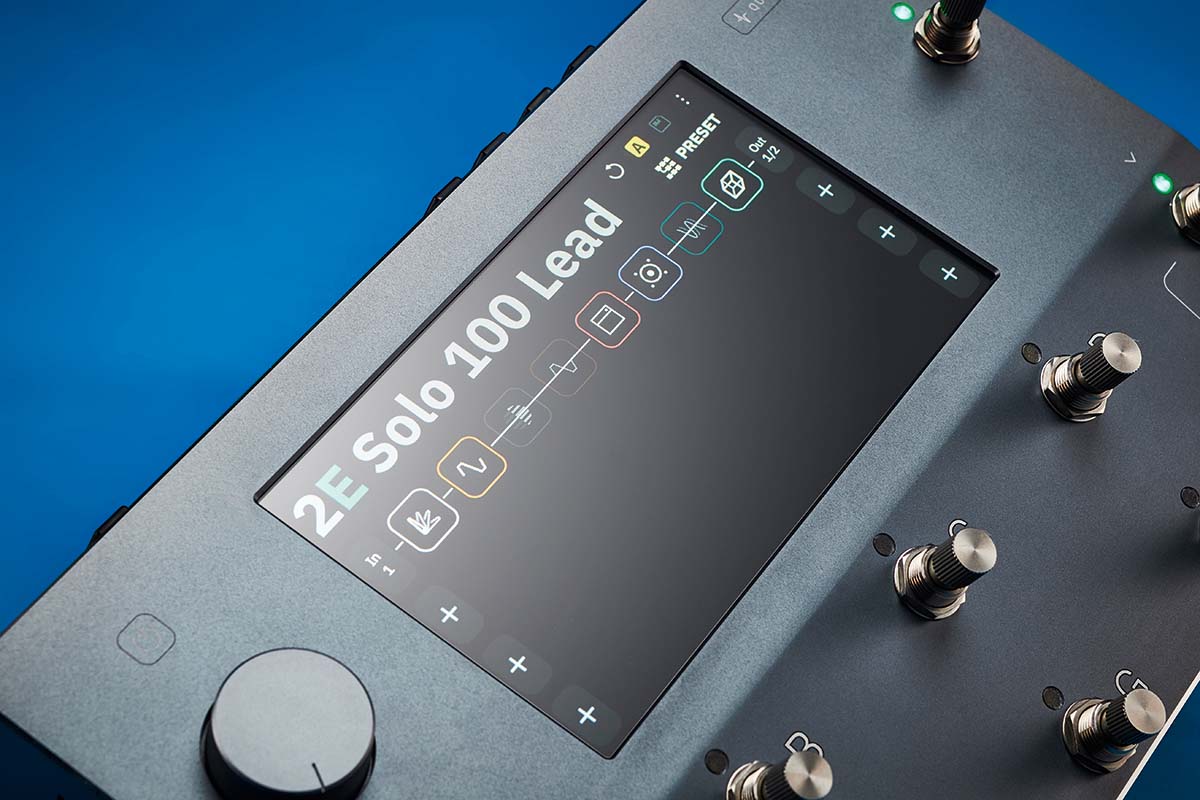
“I’m a firm believer that, let’s say you have three guitar players in the room and they all played through the same plugin, they’re all going to sound different. Because they’re all going to play differently. If you put your picking hand just a little more towards the pickup, or they play with their fingers out, or they fret really hard, it all plays a huge role because it changes the signal.
“For me, I don’t really think that a lot of guys giving away their patches really care that much because they know ‘It’s not going to sound like me’. I look at plugins and patches as a good starting point for someone to see how the artist does it, and then from there they tweak it to their liking with their hands.”
8. Lay off the edits, geddit?!
“There’s always going to be editing, don’t get me wrong. My parts are edited to a certain degree, but not note-for-note. If I’m playing a little behind the beat, they’ll bump my whole part forward a tiny bit, but we’re not speeding things up and slowing them down, and chopping and stretching them. I don’t get that.
“It’s 2021, we work really hard to make our albums, mixing them and mastering them to sound pristine. Then they get put on an app where people listen to them in earbuds for the first 30 seconds before they skip and skip, then make a decision on whether they like your music or not! So is it really going to make a difference if that delay tail is perfect? No! Sorry to be a bummer, but this is where we’re at.”
9. Create, don’t procrastinate
“I have friends who have been working on music for four or five years, and I’m always like ‘How’s it going, I’d love to hear it.’ And they go ‘Oh, it’s not ready yet.’ And it’s unfortunate, because people are stuck in that mindset of perfectionism, but it doesn’t exist. Everything is a moment in time, so you can put it out there and let people discover it while you’re working on the next thing. That should be every artist’s dream, but a lot of people are too hung up the mix, or a snare sound!
“At some point you need proof-of-concept, and you have to wrap it up and put it out there to see if anyone even likes it! If that means using presets, mixing it yourself or just doing whatever you have to do to wrap it up. It’s better than it just being files on your computer or phone.
“I think another big part of it is that a lot of people feel like they want to put their music out there, but they’re terrified of the rejection or the critique, but it’s important to get that done and get over it in my opinion. Then you’ll get used to it, and even used to people commenting negatively about your music.”
10. Learn to listen
“We’re definitely not in the normal range for guitars, and the guitars I play aren’t made out of wood so it’s a lot snappier and there’s a lot more high end register. So it enables me to play that low without sounding so muffled. It’s ultra-clear right off the bat because of the materials being used.
“But there are certain things that we need to keep in mind with EQ because we’re so low, it’s basically like a bass. So we roll off a lot of lows, but you have to be careful because at the same time you can lose a lot of weight.
“Thankfully our producer has a longstanding history of doing this well before anyone else was doing it, so he’s the one advocating for low gain, boosting up front and trying to make it sound as tight as possible.”
11. Playing heavy? Leave the gates
“For me, I’m pretty adamant that there shouldn’t be too much choke. The signal is pretty hot, but it’s all done before. So we’re boosting up-front rather than taking the gain and going to 10. I’m not one for when you palm-mute, everything cuts and it’s super-robotic like a machine.
“Maybe some parts require that, but I’m not looking for that. I feel like if you don’t use a noise gate properly, it can really suck your sound. The moment you need to start supporting melodies with octave parts and things like that, it feels like your signal’s not coming through properly.
“There’s a sweet spot with gates and you can spend a long time on that. With a plugin, you can control it after the fact so it kind of takes that worry out for me.”
12. Look beyond guitar plugins for sounds
“The first part of the song Hurt You that we just put out is actually the lowest string being pushed over the top of the fretboard onto the neck. So it’s reaching a certain note and then being pushed even farther.
“We took that sound which is definitely very jarring, then added a lot of distortion and saturation, then put some chorus on it. It kind of made this grinding gear sort of sound which became a theme throughout the song. But that pushing the string off the fretboard is definitely a thing we do from time to time.
“A lot of times for the clean sounds we’d use the Neural Plini plugin, and we’d have the Schecter in the active setting, but on the second-to-last split coil. We use a lot of dotted 8th-note delays, and we use a lot of the Valhalla reverbs. I highly recommend the Valhalla VintageVerb, Shimmer and the Room plugins.
“We went a little bit crazy on some of the clean stuff, and a lot of the time what we’ll do with those sound is take the cab sim off the amp plugin so it’s like a more colourful DI. We also used an 8-bit plugin on some of the parts, it definitely rounds it out quite a bit. It was so much fun to just experiment with a lot of stuff. You can definitely go overboard with the atmospheric sort of stuff, but those Valhalla plugins are just so nice.“
13. Plugins, baby!
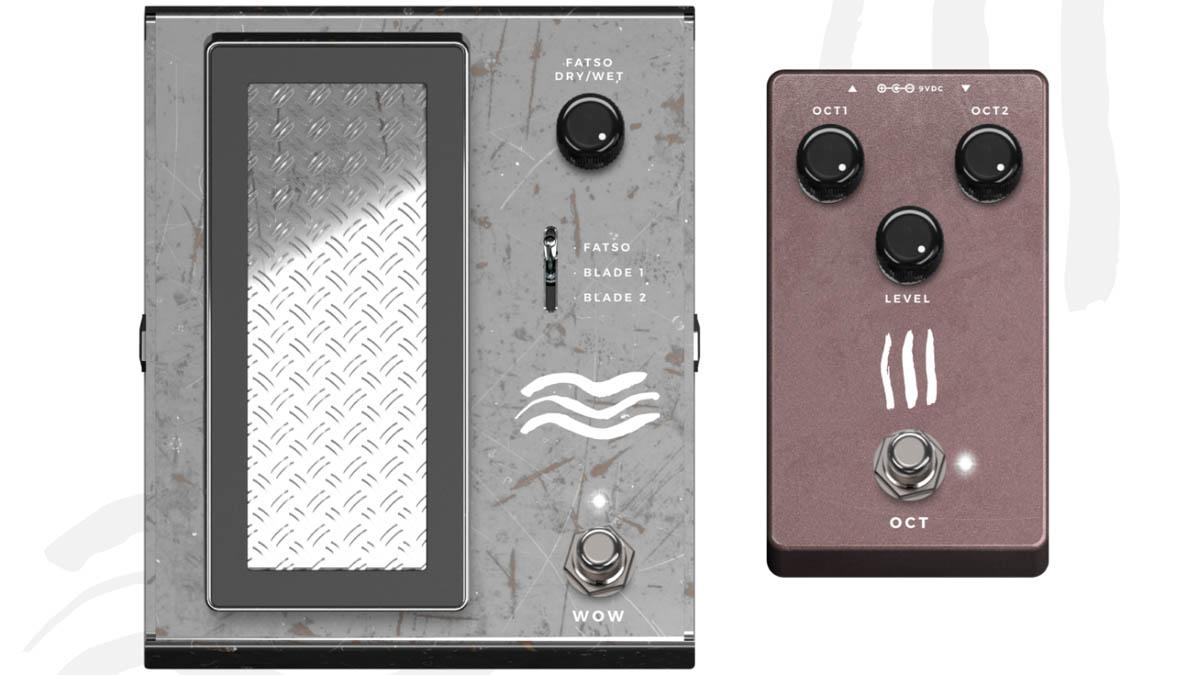
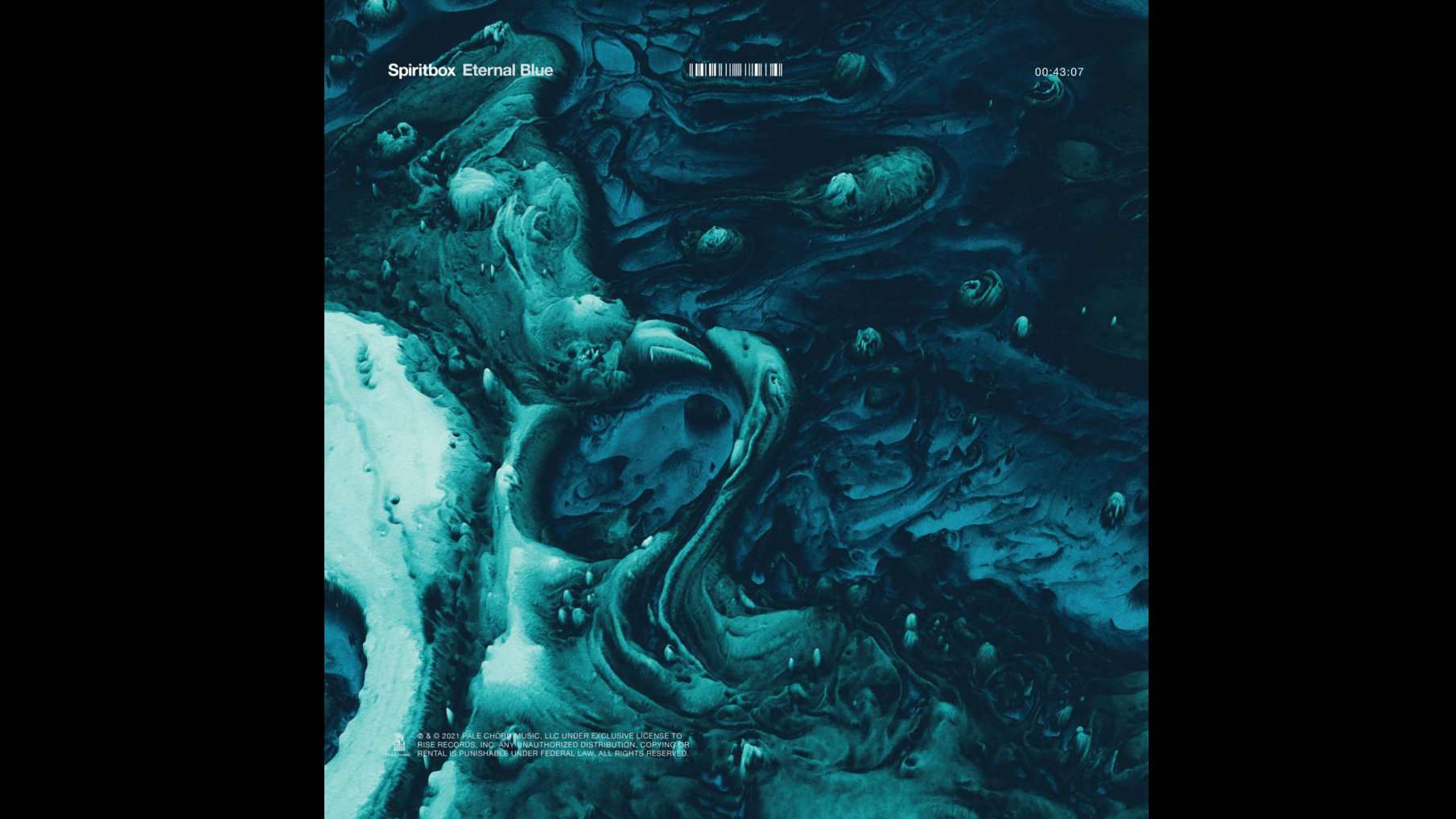
Spiritbox: watch an exclusive guitar playthrough of Circle With Me and interview with Mike Stringer
“It’s got to a point now where companies like Neural are supplying something for everyone. So if you’re a blues player or alt-rock player who wants to get into the recording/plugin game, just get one of the free trials. You can try any interface just to try it out – borrow a friends’ or something and just see if it’s for you.
“It’s not for everybody, some people are more tech savvy than others, but being able to take your ideas and record them without having to rely on going into a studio, and having it sound really good is just amazing. Even just for your own guitar playing – playing to a click, learning stuff, it’s great for your playing.“
- Eternal Blue is out now via Rise Records.

Stuart has been working for guitar publications since 2008, beginning his career as Reviews Editor for Total Guitar before becoming Editor for six years. During this time, he and the team brought the magazine into the modern age with digital editions, a Youtube channel and the Apple chart-bothering Total Guitar Podcast. Stuart has also served as a freelance writer for Guitar World, Guitarist and MusicRadar reviewing hundreds of products spanning everything from acoustic guitars to valve amps, modelers and plugins. When not spouting his opinions on the best new gear, Stuart has been reminded on many occasions that the 'never meet your heroes' rule is entirely wrong, clocking-up interviews with the likes of Eddie Van Halen, Foo Fighters, Green Day and many, many more.
